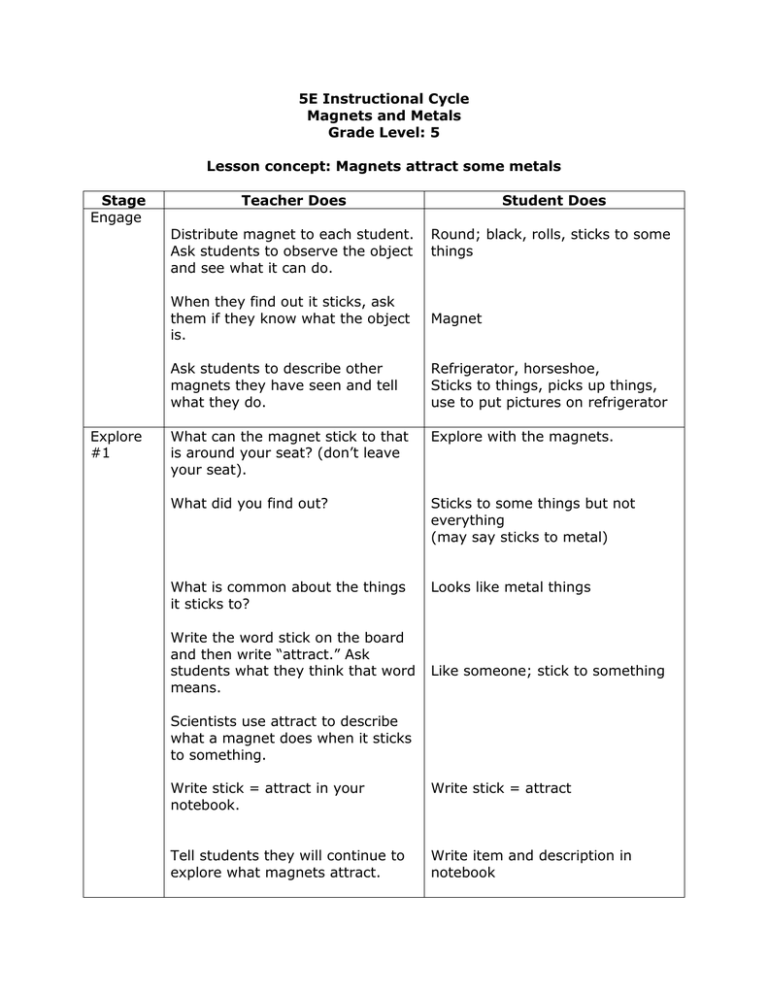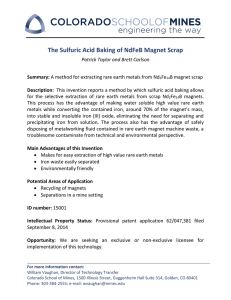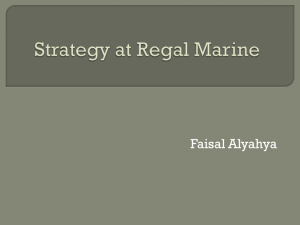5E Instructional Cycle Magnets and Metals Grade Level
advertisement

5E Instructional Cycle Magnets and Metals Grade Level: 5 Lesson concept: Magnets attract some metals Stage Engage Explore #1 Teacher Does Student Does Distribute magnet to each student. Ask students to observe the object and see what it can do. Round; black, rolls, sticks to some things When they find out it sticks, ask them if they know what the object is. Magnet Ask students to describe other magnets they have seen and tell what they do. Refrigerator, horseshoe, Sticks to things, picks up things, use to put pictures on refrigerator What can the magnet stick to that is around your seat? (don’t leave your seat). Explore with the magnets. What did you find out? Sticks to some things but not everything (may say sticks to metal) What is common about the things it sticks to? Looks like metal things Write the word stick on the board and then write “attract.” Ask students what they think that word means. Like someone; stick to something Scientists use attract to describe what a magnet does when it sticks to something. Write stick = attract in your notebook. Write stick = attract Tell students they will continue to explore what magnets attract. Write item and description in notebook Distribute a bag of items (make sure it includes aluminum, copper penny, brass brad in addition to other metals, and some non-metal items) to partners. Ask them to look at the items, observe them and record their observations in their notebook. Based on their observations, ask students to predict if the magnet will attract the object. Construct a chart to record your predictions, and provide room on the chart to record what actually happens. Make chart (column headers: item, prediction attract yes or no , actual attract yes or no) Tell your partner what kinds of items you think the magnet will attract. Report to a partner before answering the teacher’s questions. Discuss their predictions. In general what kinds of items do you think the magnet will attract? How do I know which items are metals—What are their properties? (students should be able to answer these questions from their previous investigations on metals) Tell students to test items and record results in their chart. Explain #1 Write observation of the items. metals shiny, malleable (bendable) Test and record in chart in their notebook. Ask students to review their data table. Which items did the magnet attract? Teacher records students’ responses in a T chart as she asks each group to report out. Use Numbered Heads and ask student #2 to report out for the group. What is the same about these items? Use the stem: “I observed noticed that…. ” Give list I observed that they are metal. Which items did the magnet not attract? Use stem: “We noticed that the magnet did not attract….” We noticed that the magnet did not attract…………(students give list). Did any of these items surprise you? Why? Aluminum, brass, copper penny. They surprised me because I thought magnets attract all metals but it didn’t attract these. Ask students to write a statement in their notebooks (note this will be a precursor to the claim/evidence at the end of the lesson) that summarizes their data and what surprised them. Why do you think the magnet attracts one group of metals, but not another group of metals? What is going on? Record what you are thinking/wondering about in your notebook. Ask students to read their sentences to their partner. Select a couple of partners who have sentences that you want to have the whole class hear (e.g., uses academic vocabulary to explain) and ask them to share. Explore #2 Write what the magnet attracted, what the magnet didn’t attract and what surprised them. The metals that the magnets attract must have something different than the metals that the magnet does not attract. Write in their notebooks. Read their sentences to their elbow partner in an inside voice. Share Today we are going to read to find out more about why the magnet attracts some metals, but not others. When you read today, what might you want to find out from your reading? Make a list of the student questions and select the question that has to do with why some magnets attract only some metals. brainstorm questions like: “Why do some magnets attract only some metals?” Today we are going to use a new strategy for reading using post-its. I’m going to give you some sticky notes. If you need more, let me know. As you read, I want you to use the sticky notes in the following way: 1. put a star on a sticky note and stick to the part(s) of the reading that help you find an answer to your question 2. put an ! on a sticky note and stick to the reading where you find something interesting 3. put a ? on a sticky note and stick it to the part(s) of the reading that you have questions about. When you are done with your reading, you will read the part of the reading that is next to your sticky notes with a partner. Distribute materials and start to read. When they have finished reading, ask students to partner and discuss in a Three-Way Interview. (partners talk to each other and at the end to the teacher) Partner A asks Partner B for one sentence with a star. Then Partner B asks Partner A for a sentence with a star. They continue to take turns for the ! passage and the ? passage. As they discuss, ask students to take notes in their notebook about their discussion. Suggest that they make 3 columns to record the answer to their question, the things that were interesting and Start reading, using sticky notes as they go the questions they have. Tell students to start their interview. Share what they starred, marked with ! and ? For example: Partner A: I put a star next to the sentence that talks about iron. Partner B: I put a star next to the sentence that has iron and another one next to the sentence that says nickel and cobalt. Partners A and B continue to share their sentences with each other and record their conversation in their notebook. Explain #2 After students have had an opportunity to share with their partners, ask Partner A to share one thing that he/she heard Partner B say. Partner A in each group shares one sentence he/she heard. Ask Partner B to share one thing that he/she heard Partner A say. Partner B in each groups shares one sentence he/she heard. Ask students to write a claim from evidence about metals and magnetism based on their experiment and reading. Ask students what makes a good claim and evidence statement. Remind them of the criteria (see end of the lesson for the example) on the wall if they need a hint. Claim is a generalized statement supported by evidence. Evidence should come from more than one source and be related to the claim. Tell students they can use this sentence frame if they need to. My claim is_______________ The evidence from my investigation and reading that support this claim are__________ My claim is that some metals have magnetic properties. The evidence from my investigation is that the magnet attracts some metals but not others. It attracts the paper clip and nail but it doesn’t attract the aluminum foil or the brass brad or the copper penny. The evidence from my reading is that I learned that magnets attract only metals made of iron or steel (and some with nickel or cobalt). Aluminum foil and brass do not have iron, so that explains why magnets don’t attract them. Elaborate Evaluate So what kind of metal do magnets attract? Metals that contain iron/steel (or nickel or cobalt) Which items in our classroom are made of iron? How could we find out? Use the magnets to see if they attract the item/object. Distribute magnets. Work with a partner to find as any items made of iron as you can. Record the list in your notebook. Try to find items and record in notebook. What did you find? Use the stem: “We observed that. . .” When students report out their findings, they use the stem, “We observed that. . . “ What surprised you in your results? (For example) Metal doesn’t have to be silver, it can be colored, but if it has iron in it, the magnet will attract it. Complete this prompt about magnetism as a property of metals I used to think____________. Now I think__________. I wonder why__________. I wonder if ___________. I used to think all metals were magnetic. Now I think that only those that contain iron/steel are magnetic. I wonder why my magnets don’t stick to our new stainless steel refrigerator. I wonder if magnets are all the same or if they are different. I wonder what magnets are made from.


